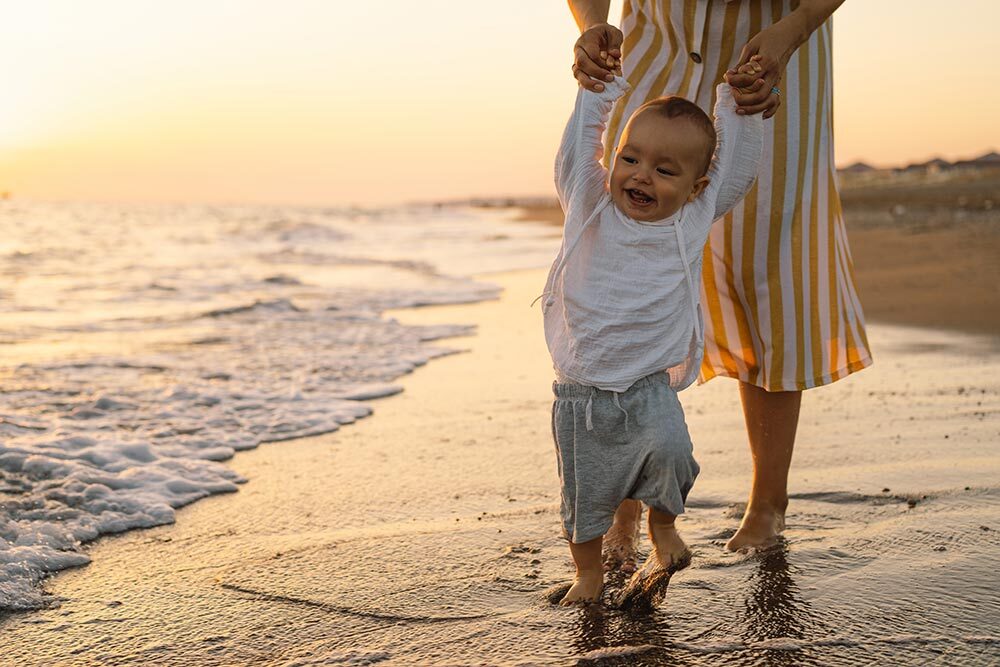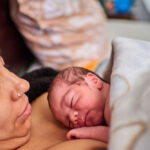10 Tips for Traveling With An Infant

Traveling with a baby doesn’t have to feel overwhelming. With the right mindset and a few smart strategies, you can turn chaos into calm and actually enjoy the journey.
Traveling with an infant sounds like a plot twist in a comedy: diapers, nap schedules, tiny socks everywhere, and the sheer amount of stuff. But here’s the good news, with a little planning (and a lot of flexibility), you can enjoy your trip. Whether hopping on a plane or loading up the car, these tips will help you navigate travel with your baby less chaotically and more confidently even if your little one is just a few months or a couple of years old.
Before you even hit the road or head to the airport check-in counter, knowing how to manage everything from breastfeeding breaks to FAA-approved seat belt guidelines (especially if your baby has their own seat) can make a huge difference. And yes, flight attendants have seen it all, so don’t hesitate to ask for help.
From what to pack to how to keep baby (and you) comfortable on the go, here are 10 travel tips every parent should know whether you are taking an international flight, or a road trip.
1. Start With the Right Travel Mindset
Adjust your expectations before you even book the ticket or load up the car. Traveling with a baby for the first time is not about sticking to the perfect schedule, it’s about flexibility, grace, and sometimes just getting through the day.
Babies and young children are unpredictable, and that’s okay. Prepare to pivot, pause, or pull over if needed. Give yourself permission to do things differently, and remember that every family trip is a learning experience. That’s the real travel hack: go with the flow.
2. Master the Art of Packing (Without Overpacking)
Bringing the entire nursery “just in case” is tempting, but hauling too much gear can make things more stressful. Instead, think about what you’ll use during the trip.
Here’s a baby air travel checklist to guide your packing:
- Diapers and wipes (more than you think you’ll need). Put these in your suitcase, carry-on, and even your purse.
- A lightweight baby carrier, wrap, booster seat for older babies.
- One cozy blanket that does it all: cover, play mat, burp cloth.
- A few changes of clothes (for both of you).
- Formula, baby food, or breast milk supplies.
- Your baby’s comfort item—blanket, pacifier, or favorite toy.
- Birth certificate, important numbers (like the pediatrician), vaccine documentation, and any medication baby needs.
Use packing cubes to separate baby gear from yours, and keep essentials in a dedicated diaper bag, so you’re not digging for wipes mid-turbulence or on a rest stop bench.
3. Don’t Skip the Babywearing
Strollers can be bulky when navigating airports, train stations, or roadside attractions. A baby carrier keeps your hands free and your baby close—a win-win.
Choose a breathable, supportive style that works for your baby’s age and your body. Some parents swear by wraps for newborns and structured carriers for older infants. Either way, babywearing helps soothe fussiness and makes moving through crowds a whole lot easier.
4. Choose the Right Time to Travel
This is one of the biggest secrets to travel easier: travel during your baby’s best window. For some families, that means leaving just after the first morning nap. For others, it might be hitting the road at bedtime.
When booking flights, consider early-morning departures when airports are calmer, and delays are less likely. Red-eye flights work for some babies but can backfire if your little one doesn’t sleep well in unfamiliar places.
Whenever possible, align international travel times with your infant’s existing sleep schedule.
5. Bring Comforts From Home
New places can be overstimulating for infants. To help them adjust, bring familiar things like their crib sheet, white noise machine, or bedtime book. Even the smell of their usual sleep sack can offer comfort.
Creating a mini bed and nap time routine in a hotel room or Airbnb helps baby sleep. Stick with what they know—bath, bottle, book, snuggle—and your baby will feel more at home wherever you go.
6. Learn the Travel Rules
Most airlines allow you to gate-check a stroller and car seat for free, and many offer early boarding for families with small children. That said, don’t feel pressured to board first if your baby is happier waiting until the last second.
Want to bring breast milk or formula through security? You can. TSA guidelines allow you to travel with more than 3.4 ounces. Pro tip: label everything clearly and be prepared for a quick inspection.
And yes, you can bring your baby on board a plane without a separate seat (generally up to two years old for most airlines), but having one (if budget allows) can make a world of difference.
7. Keep Baby (and You) Comfortable In-Flight or On the Road
Whether you’re flying with an infant or driving cross-country, comfort matters. Dress your baby in breathable layers and avoid anything with tricky snaps or scratchy fabric.
Don’t forget to nurse, bottle-feed, or offer a pacifier during takeoff and landing to help with ear pressure. On road trips, schedule frequent stops for feeding, changing, and stretching. Baby might sleep through most of the ride, but you probably won’t if you’re stressed about when they’ll need their next break.
8. Create a Diaper Change Game Plan
Public restrooms are not always great. Be ready to improvise a clean space for diaper changes. A portable changing pad is essential, as are zippered wet bags for messy clothes.
Store extra diapers, wipes, and backup outfits in multiple locations—one in your carry-on, one in your day bag, and one in the car. That way, you’re never caught off guard.)
9. Prioritize Sleep—But Don’t Obsess
Will your baby nap exactly at 1:15 in a new city? Probably not. That’s okay. While keeping naps consistent helps, one skipped nap won’t ruin your whole trip.
Try to recreate your usual nap routine when possible—dim lights, white noise, and familiar cues help a lot. And if baby only naps in your arms while you sip a lukewarm coffee in the shade of a historical landmark … that still counts as rest.
10. Protect Baby’s Health on the Go
Travel exposes your baby to new environments, which is excellent for development but can also introduce germs and sun. Wash your hands often and bring hand sanitizer for when sinks aren’t nearby.
For sun protection, pack baby-safe sunscreen and a stroller shade or travel umbrella. At night, ensure safe sleep by setting up a flat, firm surface free of blankets and pillows.
Bonus Tips to Save Your Sanity
- Keep a few surprises handy—new board books, soft toys, or textured sensory items—to pull out when fussiness strikes.
- Let go of the schedule (a little). Vacation time is not the time to be rigid, especially regarding the baby’s mood.
- Take turns. If you’re traveling with a partner or family member, alternate nap duty or nighttime feeds so both of you get a break.
- If you’re driving, plan rest stops that double as mini adventures—state parks, beaches, or scenic overlooks can be great spots to nurse and recharge.
Traveling with an infant isn’t about perfection but preparation, patience, and perspective. From sticking to a simple bedtime routine to packing smart with a baby travel checklist, each decision you make can lighten the load.
With your baby carrier on, white noise humming, and just enough diapers to survive a three-hour delay, you’re not just surviving. You’re building family memories that start long before you reach your destination.
And when in doubt? Snacks, songs, and snuggles go a long way.
Let the adventure begin.








